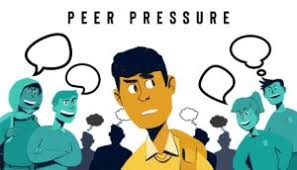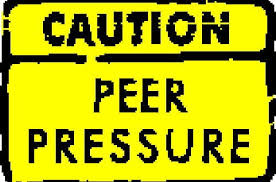
As the sun rises over bustling city streets and quiet neighborhoods alike, the vibrancy of youth is juxtaposed with a darker reality that looms large – the insidious influence of peer pressure. In 2025, young people find themselves navigating an increasingly complex social landscape, where the desire to fit in and be accepted can often lead to choices that jeopardize their futures.
“It’s a constant battle,” says Fatima, a youth counselor in Nairobi. “Many young people feel like they have to conform to certain expectations or behaviors to be accepted by their peers, and that pressure can be overwhelming. Unfortunately, it often leads them down paths they never intended to take.”
The impact of peer pressure on today’s youth is multifaceted, manifesting in various ways, from substance abuse and risky behaviors to academic underperformance and mental health challenges. As society becomes ever more interconnected through social media and technology, the pressure to conform to certain ideals and standards has intensified, creating a breeding ground for anxiety and confusion.
One of the most tangible effects of peer pressure is the prevalence of substance use among adolescents. In 2025, reports indicate a worrying increase in the use of alcohol, drugs, and other substances among young people. Many youths cite the desire to “fit in” or impress their friends as a primary motivator for trying drugs or drinking excessively.
“I’ve seen so many of my friends start using drugs because they wanted to seem cool,” shares Asha, a university student. “At first, it was just about having fun, but now it’s a serious problem for some of them. They feel like they can’t say no because they don’t want to be excluded.”

The normalization of substance use in social settings can lead to a dangerous cycle that is hard to break. Young people often feel trapped, believing that their social acceptance hinges on their willingness to partake in risky behaviors. This can have severe consequences, including addiction, legal troubles, and strained family relationships.
Moreover, the pressure to excel academically can also take a toll on mental health. While competition in schools has always existed, the relentless quest for high grades and university placements can create an environment where students feel they must sacrifice their well-being to meet expectations. This phenomenon is exacerbated by social media, where achievements are often publicly displayed, leading to comparisons that can diminish self-worth.
“The pressure to succeed is immense,” explains David, a high school teacher in Nakuru. “Students are not only competing against each other but also against the curated lives they see online. It creates an unhealthy mindset where failure feels like a personal indictment.”
The mental health ramifications of peer pressure are profound, with reports of anxiety, depression, and feelings of inadequacy becoming increasingly common among young people. Many youths are hesitant to seek help, fearing that doing so might make them appear weak or different from their peers.
“There’s a stigma around mental health that keeps many young people from speaking out,” says Fatima, the counselor. “They worry about being judged or labeled, which only perpetuates their struggles.”
In 2025, efforts to combat the negative effects of peer pressure are gaining momentum, with schools and community organizations implementing programs designed to foster resilience and promote healthy decision-making. These initiatives often include workshops on self-esteem, stress management, and the importance of making independent choices.
“It’s crucial that we empower our youth to understand that they have the right to say no,” emphasizes Asha. “We need to teach them that it’s okay to prioritize their own values and well-being above fitting in.”
Additionally, parents play a critical role in helping their children navigate the complexities of peer pressure. Open communication and fostering a supportive environment can make a significant difference in a young person’s ability to resist negative influences.
“Parents need to be actively involved in their children’s lives,” explains David. “By creating a safe space for dialogue, they can help their kids feel more secure in their choices and less inclined to give in to peer pressure.”
Despite the challenges, there is hope for a new generation that is beginning to recognize the importance of authenticity over conformity. Many young people are advocating for mental health awareness and promoting a culture of acceptance and support among their peers.
“We’re starting to see more youth-led movements that encourage authenticity,” says Fatima. “These initiatives remind young people that it’s okay to be different and that true friendship is built on support, not superficial expectations.”

As the year unfolds, it becomes increasingly clear that addressing the issue of peer pressure requires a collective effort from families, schools, and communities. By fostering an environment of open communication, support, and education, society can help guide young people toward making choices that honor their individuality and aspirations.
“The journey of youth is complex, but it doesn’t have to be a solitary one,” concludes Asha. “By coming together and addressing the pressures they face, we can help them navigate their paths with confidence and clarity, ensuring they don’t lose their way in the process.”
In 2025, as young people continue to grapple with the weight of expectations, the collective commitment to supporting their growth and well-being is more critical than ever. In a world where acceptance can often feel conditional, empowering youth to embrace their true selves may be the most powerful antidote to the pressures they face.




